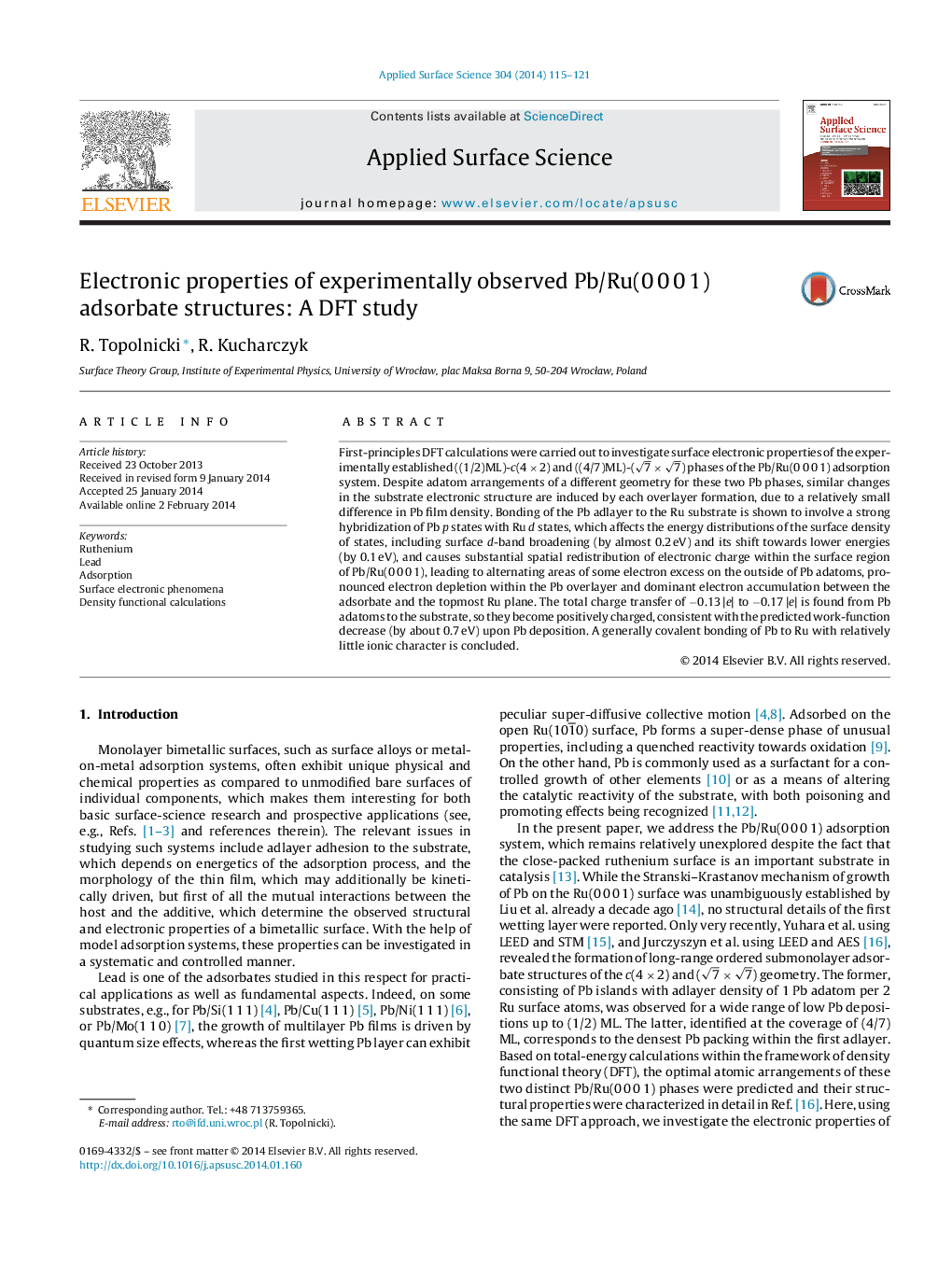| Article ID | Journal | Published Year | Pages | File Type |
|---|---|---|---|---|
| 5350569 | Applied Surface Science | 2014 | 7 Pages |
Abstract
First-principles DFT calculations were carried out to investigate surface electronic properties of the experimentally established ((1/2)ML)-c(4Â ÃÂ 2) and ((4/7)ML)-(7Ã7) phases of the Pb/Ru(0Â 0Â 0Â 1) adsorption system. Despite adatom arrangements of a different geometry for these two Pb phases, similar changes in the substrate electronic structure are induced by each overlayer formation, due to a relatively small difference in Pb film density. Bonding of the Pb adlayer to the Ru substrate is shown to involve a strong hybridization of Pb p states with Ru d states, which affects the energy distributions of the surface density of states, including surface d-band broadening (by almost 0.2Â eV) and its shift towards lower energies (by 0.1Â eV), and causes substantial spatial redistribution of electronic charge within the surface region of Pb/Ru(0Â 0Â 0Â 1), leading to alternating areas of some electron excess on the outside of Pb adatoms, pronounced electron depletion within the Pb overlayer and dominant electron accumulation between the adsorbate and the topmost Ru plane. The total charge transfer of â0.13Â |e| to â0.17Â |e| is found from Pb adatoms to the substrate, so they become positively charged, consistent with the predicted work-function decrease (by about 0.7Â eV) upon Pb deposition. A generally covalent bonding of Pb to Ru with relatively little ionic character is concluded.
Related Topics
Physical Sciences and Engineering
Chemistry
Physical and Theoretical Chemistry
Authors
R. Topolnicki, R. Kucharczyk,
